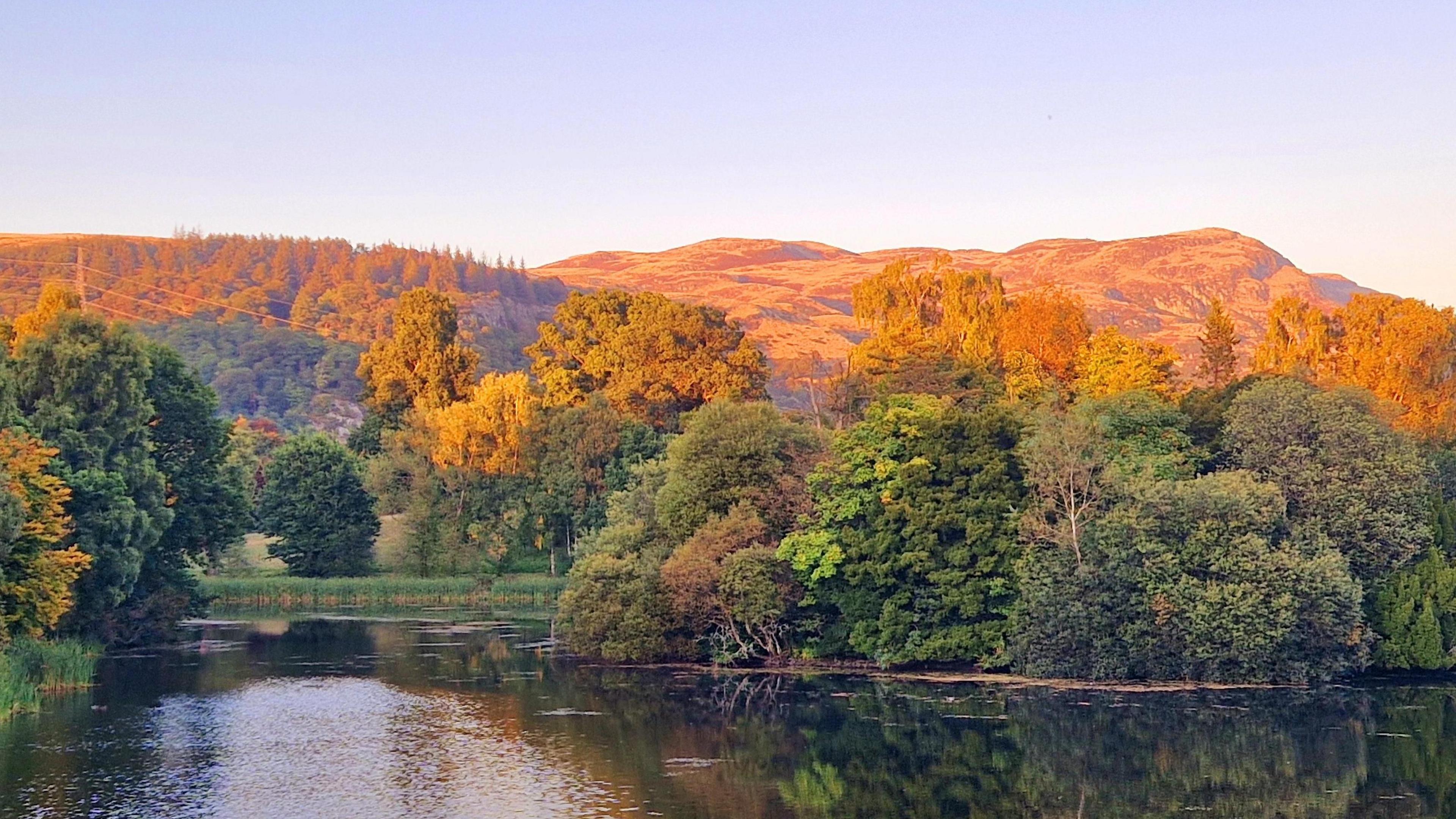Autumn equinox 2024: When is it?

- Published
With warm and fine weather over the last week, many of us enjoyed a last spell of summer-like weather.
However, heavy rain and thunderstorms have brought a change and with the autumn equinox on Sunday, it is starting to feel like autumn has properly arrived.
You may have heard us already talking about autumn in the weather forecasts.
This is because meteorological autumn always starts on 1 September but the astronomical one begins at equinox (22 September this year).
For meteorological records it is preferable to group the seasons into three-month periods with the northern hemisphere autumn being September, October and November. This makes year-on-year comparisons easier.
- Published20 September
The word "equinox" is derived from Latin and literally translates to "equal night".
On these days, everywhere on Earth experiences roughly 12 hours of sunshine and 12 hours of darkness.
The Earth's axis is tilted at an average of 23.5 degrees.
As the Earth travels on its year-long path around the Sun it is tilted towards or away from the Sun, which gives us our seasons.
But, on the day of an equinox, the tilt of Earth's axis is perpendicular to the Sun's rays, producing a nearly equal amount of day and night all over the world.
Normally, the autumn equinox falls between 22 and 24 September, and this year the equinox occurs on 22 September at 13:44 BST.
What is the equinox?
Equinox or equilux?
Although the equinox marks the point when day and night are "roughly equal", strictly speaking, in the United Kingdom there won't be exactly 12 hours of light and 12 hours of darkness on the equinox.
This is because the equinox is measured with respect to the centre of the Sun, not its edge. Therefore, although it can appear the Sun has risen, the centre could still be below the horizon.
Additionally, sunlight is refracted (bent) by the atmosphere which means it begins to appear light before the Sun has risen. The same process at the end of the day means there are a few extra minutes of light after the Sun has set.
Because of these two factors, the date when day and night are exactly equal in the UK is called the equilux, which occurs a few days after the autumn equinox.
Conkers are falling from trees as our weather turns more autumnal
As we approach December, the northern hemisphere of Earth will tilt further away from the Sun.
By 21 December, the Sun will have reached its lowest point in the sky during the day, marking the winter solstice.
At which point, daylight hours will begin to increase once again.
When do the clocks go back?
Another sure sign that autumn is here is when we put our clocks back and our evenings suddenly get much darker.
This happens in the UK at 2am on Sunday 27 October this year.
Clocks going back is often considered the "better" clock change as we get an extra hour in bed (or in the nightclub).
Though it's not so good if you are working on a night shift, as I can tell you from experience.
With nights getting longer, temperatures dropping with mist and fog are common autumnal conditions